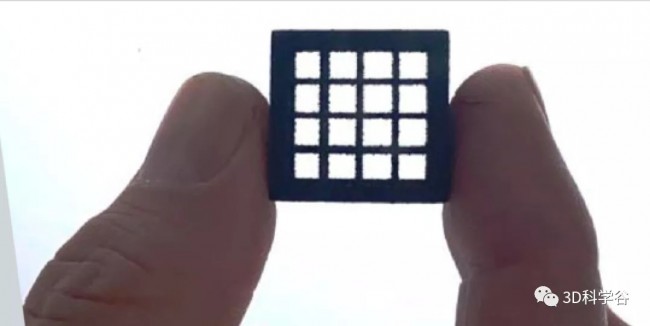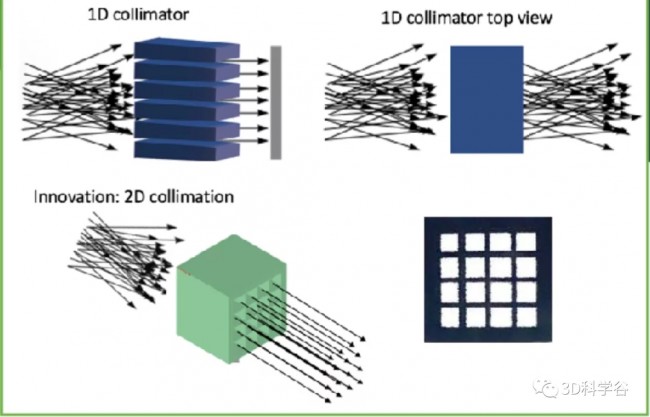Common collimator designs essentially only collimate in one dimension.And pass3D printing, Which brings the feasibility of the new design scheme of the collimator. In this regard, the design freedom and material flexibility provided by the ExOne binder jet enable the study of new collimator designs to advance the neutron scattering experiment. Characterization of the microstructure of liquids and solids.
3D printingCeramic collimator © exone
![]() 3D printing enables advanced and complex designs
3D printing enables advanced and complex designs
In order to obtain high resolution that allows researchers to map material properties, neutron collimators are used to absorb stray neutrons and improve experimental results. They improve resolution and reduce background signals in experiments, such as diffraction and spectroscopy. Common designs include blades coated with highly absorbent materials (such as boron carbide), arranged in parallel or divergent.
Using 3D printing technology, JJ X-Ray experts can develop more complex designs for 2D alignment. The team recently received the first binder jet 3D printed sample made of boron carbide-rich powder (10B4C). The collimator prototype has a 5×5mm straight wall channel that cannot be produced using any other technology. JJ X-Ray application experts hope that the advanced and complex design achieved through the 3D printed collimator will open up new research opportunities and further develop the field. For example, if the honeycomb structure can be embedded in an experimental device, the paradigm of future experiments will change. Based on 3D printing, JJ X-Ray is exploring the extent to which it can push the design of curved structures, thinner walls and tapered narrow channels.
According to the 2021 Shenzhen International Ceramics 3D Printing Application Summit Forum, in the context of Industry 4.0, ceramics3D printing technologyAs one of the additive manufacturing technologies, it has begun to enter a period of rapid growth. According to relevant research reports, by 2030, the revenue of the ceramic additive manufacturing market is estimated to reach 4.8 billion U.S. dollars.However, as of now, 3D printing of ceramics is still very small compared to other materials.3D printing materialsThe key process and technical bottlenecks in the preparation process need to be resolved urgently.
For many years, 3D printing of ceramics was just a dream of the engineering world. It’s hard to imagine using such a hard material in this process. Especially considering the shrinkage of ceramics during sintering. For a long time, the maximum size of parts that can be manufactured was limited to a few cubic centimeters. However, 3D printing ceramic technology is getting continuous breakthroughs, just as ExOne binder jetting has achieved breakthroughs in collimator manufacturing.
According to Raise3D Shanghai Fuzhi’s market observation, the application of ceramic additive manufacturing will experience a growth inflection point after 2025.The main reason is that ceramic additive manufacturing3D printing technologyIt will gradually mature, and there will be enough production demands on the market to support the development of this technology application. In the medium and long term, the added value of 3D printed ceramic parts will drive user demand for ceramic additive manufacturing hardware and materials. For the application of engineering ceramics and advanced ceramic materials, this trend is more obvious. Many companies that produce ceramic components, especially those that manufacture advanced ceramic components, can benefit a lot from high value-added ceramic components designed for additive manufacturing (DfAM).
(Editor in charge: admin)




0 Comments for “Case: 3D printed ceramic collimator”